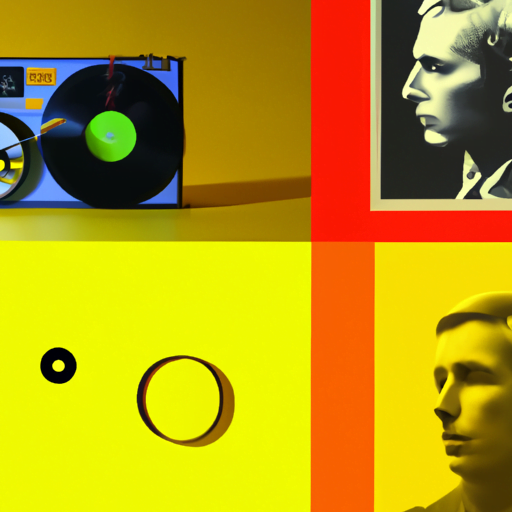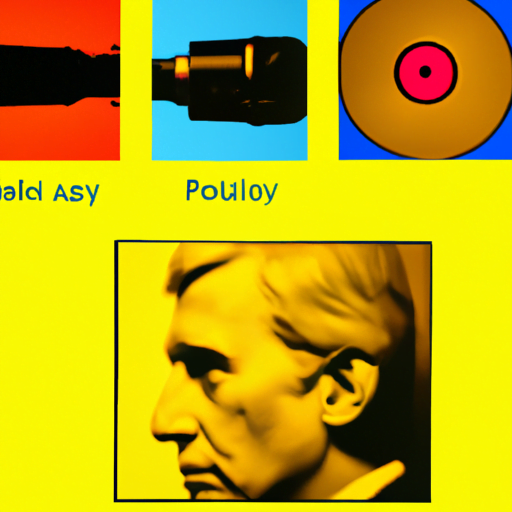
-
Table of Contents
Visualizing Music: Album Art and Music Graphics

Music has always been a multi-sensory experience, engaging not only our auditory senses but also our visual perception. Album art and music graphics play a crucial role in enhancing the overall music experience, capturing the essence of an album or a song and creating a visual representation that resonates with the audience. In this article, we will explore the significance of album art and music graphics, their evolution over time, and the impact they have on the music industry and its listeners.
The Evolution of Album Art
Album art has come a long way since its inception. In the early days of vinyl records, album covers were often simple and straightforward, primarily serving as a means to protect the fragile vinyl disc. However, as the music industry grew and albums became more than just a collection of songs, album art started to play a more prominent role.
One of the most iconic examples of early album art is the cover of The Beatles’ “Sgt. Pepper’s Lonely Hearts Club Band” released in 1967. Designed by Peter Blake and Jann Haworth, the cover featured a collage of famous personalities, creating a visual representation of the album’s concept and themes. This groundbreaking album cover set a new standard for album art, inspiring artists and musicians to think beyond the conventional.
With the advent of the digital age, album art faced new challenges and opportunities. As physical album sales declined and digital downloads became the norm, album art had to adapt to the smaller screens of smartphones and music players. This led to a shift in design principles, with artists focusing on creating visually striking and recognizable thumbnails that would catch the attention of potential listeners.
The Role of Album Art in Music Marketing
Album art plays a crucial role in music marketing, acting as a visual representation of an artist’s brand and music. It serves as a powerful tool to attract potential listeners, create a memorable impression, and convey the mood and style of the music contained within.
Research has shown that album art significantly influences consumer behavior and purchasing decisions. A study conducted by the University of Miami found that album covers with visually appealing designs and strong emotional cues had a higher likelihood of being purchased by consumers. This highlights the importance of album art in capturing the attention of potential listeners and driving sales.
Furthermore, album art has the potential to become a cultural icon and a symbol of an era. Think of Pink Floyd’s “The Dark Side of the Moon” or Nirvana’s “Nevermind” – the album covers have become synonymous with the music and the cultural movements they represent. They have transcended their original purpose and have become works of art in their own right.
The Art of Music Graphics
Album art is just one aspect of the broader field of music graphics. Music graphics encompass a wide range of visual elements associated with music, including posters, concert visuals, music videos, and merchandise designs. These graphics serve as extensions of an artist’s brand and music, creating a cohesive visual identity that resonates with the audience.
Music graphics often incorporate various design elements, such as typography, illustrations, and photography, to create visually compelling and engaging visuals. They aim to evoke emotions, convey the mood of the music, and enhance the overall music experience. For example, the psychedelic posters of the 1960s perfectly captured the spirit of the era and the music it represented.
Music graphics also play a crucial role in live performances. Concert visuals, including stage designs, projections, and lighting, create an immersive experience for the audience, enhancing the emotional impact of the music. Artists like Beyoncé and Kanye West are known for their visually stunning live performances, where music graphics play a central role.
The Impact of Streaming Platforms on Album Art
The rise of streaming platforms has revolutionized the way we consume music, and it has also had a significant impact on album art. With streaming platforms like Spotify and Apple Music dominating the music industry, album art has become even more important in catching the attention of listeners scrolling through endless playlists.
Artists and designers now have to consider how their album art will appear as a small thumbnail on a screen, ensuring that it stands out and conveys the essence of the music. This has led to a resurgence of bold and minimalist designs that are easily recognizable even at small sizes.
Streaming platforms have also introduced new opportunities for interactive album art. For example, Spotify allows artists to create animated album covers that respond to user interactions, adding an extra layer of engagement and creativity to the music experience.
The Future of Album Art and Music Graphics
As technology continues to advance, the future of album art and music graphics holds exciting possibilities. Virtual reality (VR) and augmented reality (AR) have the potential to revolutionize the way we experience music visuals. Imagine being able to step into a virtual world created by an artist, where the music and visuals are seamlessly integrated.
Furthermore, advancements in artificial intelligence (AI) and machine learning could enable personalized album art and music graphics tailored to individual listeners’ preferences. AI algorithms could analyze a listener’s music taste and create custom visuals that resonate with their unique preferences and emotions.
Summary
Album art and music graphics are an integral part of the music experience, capturing the essence of an album or a song and creating a visual representation that resonates with the audience. From the early days of vinyl records to the digital age, album art has evolved, becoming a powerful tool in music marketing and a cultural icon in its own right. Music graphics, including posters, concert visuals, and music videos, further enhance the visual identity of an artist and create immersive experiences for the audience.
With the rise of streaming platforms, album art has become even more important in catching the attention of listeners scrolling through endless playlists. Bold and minimalist designs that stand out as small thumbnails have become the norm. The future of album art and music graphics holds exciting possibilities, with VR, AR, and AI offering new ways to experience and personalize music visuals.
As music continues to evolve, album art and music graphics will remain an essential component, enriching the music experience and creating lasting visual impressions.
